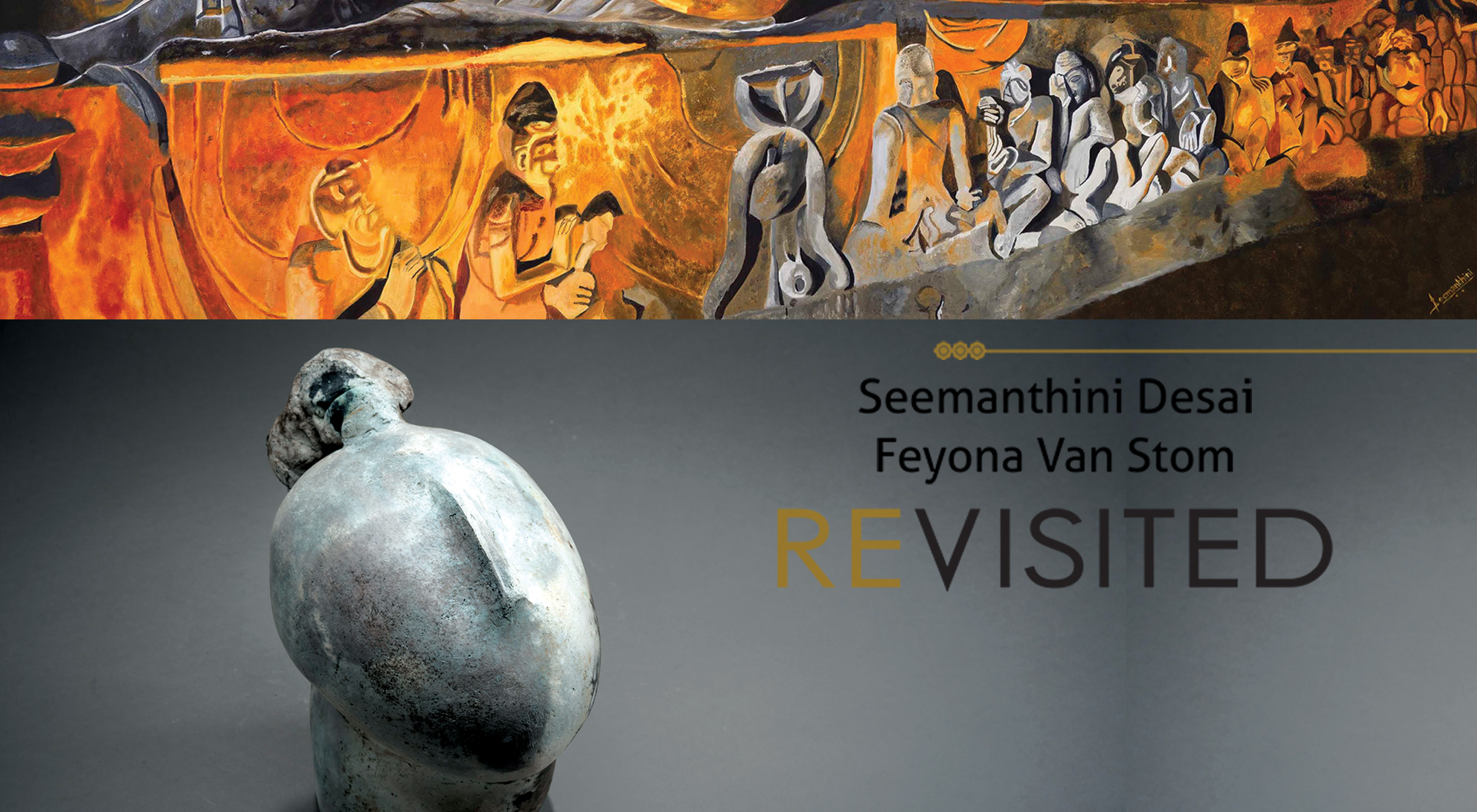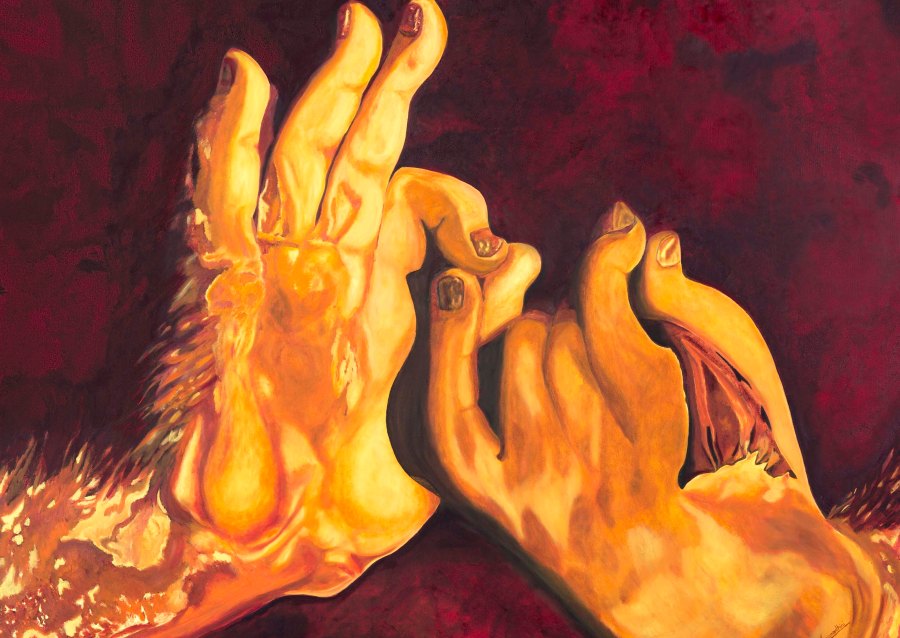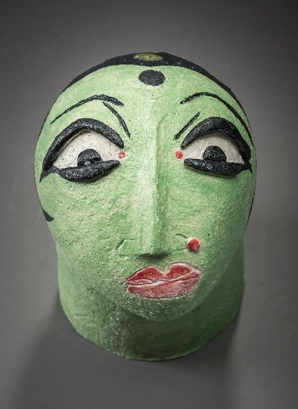
Ajanta Caves – Inspirational Art – Sumita Dutta
Step into Gallery Manora’s warm golden aura of serenity haloing Dr. Seemanthini Desai’s monumental paintings like The Buddha in Parinirvana and Teacher and Taught. Exhibited in tandem, Feyona Van Stom’s delicate ceramic heads and torsos contrast in size, exuding rich sensory stimulation with their textures and liquid expressions–ranging from intense Rapt to flowing Peace. In common is the fountainhead of inspiration, the epitome of Indian heritage art-Ajanta Caves.
This Buddhist centre of art and spirituality, situated in the cliffs by the Waghora river (Deccan plateau), produced in two phases fine examples of the first Indian Art Renaissance. The first, dating back to 200 BC, following Hinayana faith under the Sathavahana rulers, did not depict Buddha in the human form. Mahayana tradition flourished in the second phase around 470 CE under the patronage of the Vakataka King Harisena. Huge sculptures of Buddha were carved out of the rock in garbagrihas (sanctum sanctorum) and elaborate relief carvings decorated pillars, capitals, doorways and niches. All the sculptures were originally plastered, vividly painted with a palette of six natural dyes, then buffed to a sheen.
Murals from both phases exist proving that the Indian artist of 200BC had mastered expression through fluid line, perspective and shading, and story-telling through innovative compositions of people. Unlike other Indian murals where stories are illustrated in horizontal friezes, these didactic fables spread out in all directions from a central character or incident. Often grouped by location, the stories are demarcated by architectural detail. Subjects are incarnations of the Buddha and Bodhisattvas, the Jataka tales, and illustrations of contemporary society, all interspersed with lyrical decorative motifs. The compositions are a harmonious balance of physical beauty and the spiritual, of aristocrats, dancers, and mendicants, giving importance to every role in society. They underscored the importance of renouncing worldly pleasure to reach the inner sanctum and attain Buddhahood. Groups of artists, perhaps from different regions, are surmised to have worked in different sections for styles vary considerably.
With REVISITED, Gallery Manora presents two artists from two hemispheres of Earth. Expression and style differs vastly though Ajanta inspired both bodies of displayed work. Just as their exhibits juxtapose and complement each other, their concepts too contrapose and are a perfect foil for each other. Dr. Seemanthini’s paintings are of the Ajanta Cave sculptures and Feyona’s ceramics are translations of the delicate swaying movements and expressive faces painted in the Ajanta murals.
 TEACHING FROM THE HEART DHARMACHAKRA MUDRA 2016
TEACHING FROM THE HEART DHARMACHAKRA MUDRA 2016
The caves, mostly in darkness, can be viewed only by artificial light or when the sun’s slanted rays enter the cave. Dr. Seemanthini, enraptured by the golden rays of the evening sun lighting up the sculptures, mellow light and shadow moulding and creating a range of emotive effects, chose a palette of golds and oranges to delicately stroke in the effect experienced. “Shades of the setting sun,” she says. She wishes she had painted larger canvases. Perhaps an even more ambitious project may not be too far into the future for this Indian artist.
Feyona’s art gives language to human body movements. She wanted to forge in ceramic her interpretation of the Ajanta mural artist’s articulate outlines. After hand-moulding clay, she fires, paints and glazes them repeatedly until satisfied with the effect. A well-established Australian artist, Feyona loves that her creations travel and people across the world enjoy them in public displays as well as in private collections.
Ajanta caves, the name perhaps originating from the ancient Ajitañjayasthana, is succumbing to time and the clumsy attentions of man, well intentioned or not. As long as it exists, it inspires artists and lives on in their work transformed through their sensibilities to inspire future generations.
– Sumita Dutta / Painter & Writer
Gallery Manora hosts REVISITED, showcasing Feyona Van Stom and Dr. Seemanthini Desai’s work inspired by Ajanta art. Gallery timings: 11 a.m. – 7 p.m./ 4th March 2017 – 9th April 2017/ Open on Sunday 9th April

